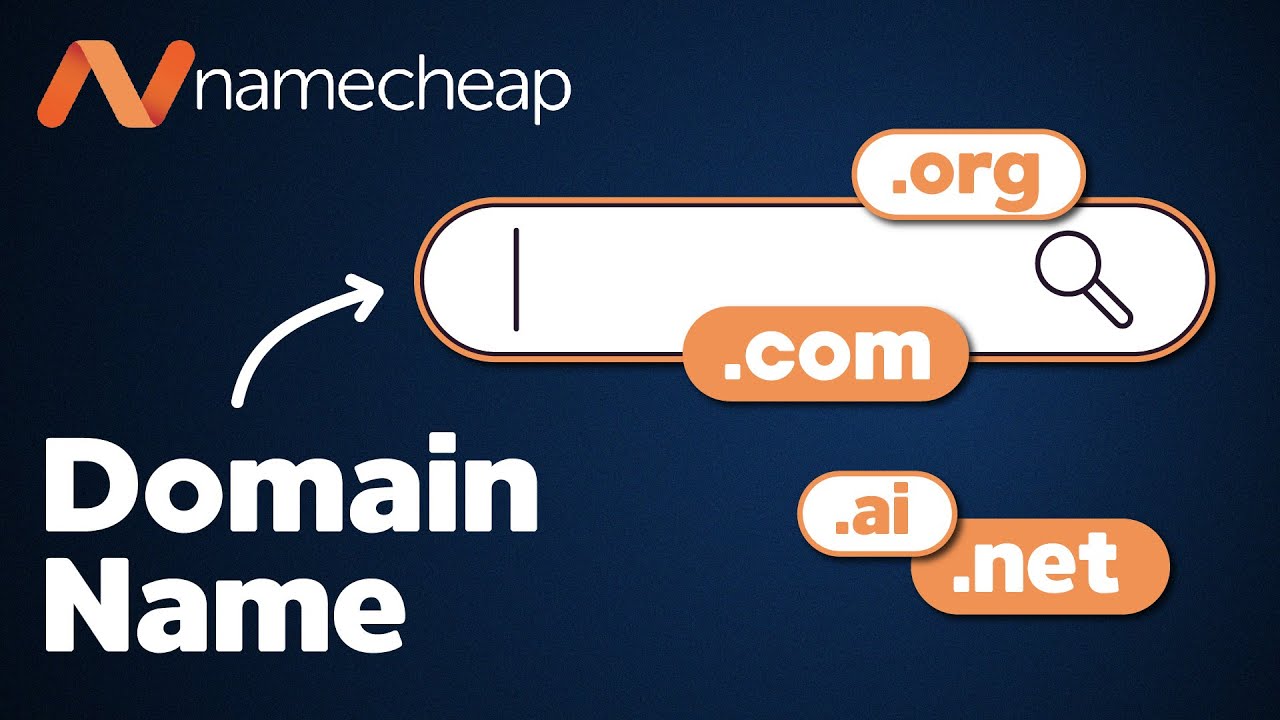The Namecheap website builder is a tool that makes it simple for people to make websites, even if they don’t know much about technology. The Namecheap website builder’s features, templates, and user interface will all be explained in detail in this blog. Whether you’re hoping to make an individual site, a help based business page, or a straightforward portfolio, this guide will walk you through the fundamentals of utilizing this stage.
Grasping the Namecheap Web designer
The Namecheap web designer is an intuitive device that works on the site creation process. Without having to worry about the technology that underpins their websites, users can choose from a variety of templates, personalize them, and publish them. This makes it an alluring choice for the people who need a clear answer for setting up an internet based presence.
Elements of the Namecheap Web designer
A few vital elements of the Namecheap web designer include:
Easy to understand Connection point: The developer is intended to be instinctive, permitting clients to explore effectively through the different choices and settings.
Format Choice: Clients can look over a wide exhibit of layouts customized for various sorts of sites.
Intuitive Usefulness: The developer permits clients to add, eliminate, or adjust components on their pages with basic intuitive activities.
Versatile Responsiveness: Because they are made to be responsive, the templates make sure that websites look good on all devices.
Simple Distributing: When the site is prepared, clients can distribute it straightforwardly through the stage.
Beginning with Namecheap Web designer
To begin utilizing the Namecheap web designer, you first need to pursue a facilitating plan that incorporates this instrument. This is the way you can get everything rolling:
Visit the Namecheap site and select a facilitating plan that incorporates the web designer. Whether you’re looking for shared hosting or something more advanced, be sure to select a plan that meets your requirements.
Step 2: Choosing a Template When you sign up, you’ll have access to a bunch of different templates. Every layout fills in as a beginning stage for your site. You can look at various templates before choosing one that fits your vision.
Step 3: Customizing Your Website After Choosing a Template You Can Start Customizing Your Website The developer permits you to alter text, pictures, and different components without any problem. You can add new areas, change designs, and adjust styles to match your marking.
Layout Choices in Namecheap Web designer
The Namecheap web designer offers different layouts appropriate for various sorts of sites. The following are a couple of classifications to consider:
Websites for oneself: ideal for personal blogs or portfolios.
Web-based businesses: Appropriate for administration based organizations like cleaning administrations or cultivating.
Websites for Events: Ideal for displaying occasions or get-togethers.
Altering Your Site
It is clear to Altering your site. An overview of the editing process can be found here:
Utilizing the Intuitive Supervisor
The intuitive usefulness permits you to tap on components to straightforwardly alter them. Text, images, and buttons can all be changed without knowing how to code. For instance, to supplant a picture, basically select the picture block and pick another picture from the display or transfer your own.
Adding New Sections To add more content, click the plus icon to add new sections like galleries, contact forms, or text blocks. This component helps in improving the site’s usefulness and format.
Restrictions of the Namecheap Web designer
While the Namecheap web designer is easy to understand, it has a few constraints. Users might run into:
Issues in the Template Preview: Clients can see each format in turn, which might prompt blunders in the event that they attempt to at the same time see various layouts.
Restricted Customization Choices: Although sufficient for basic requirements, the customization options may not be as extensive as those offered by other platforms.
Expired Templates: A few clients have revealed that the layouts feel obsolete and need current plan components.
Contrasting Namecheap and Other Web designers
While considering the Namecheap web designer, contrasting it and other well known options is fundamental:
GoDaddy Website Builder The user-friendly GoDaddy website builder is known for its extensive template selection and free trial. It could be a superior choice for those searching for a more current plan insight.
Wix and Squarespace
For clients looking for cutting edge highlights and more classy layouts, Wix and Squarespace are fantastic other options. They give greater adaptability in plan however come at a more exorbitant cost point.
Publishing Your Website The next step is to publish your website after you have customized it to your liking. Just snap the distribute button, and your site will go live. You can likewise back up your site or reestablish it if necessary, it is protected to guarantee your work.
Final Thoughts on the Namecheap Website Builder The Namecheap website builder is good for people who want to make a website that is easy to make. It is able to effectively meet the needs of those with basic needs, despite its limitations. For further developed clients or those searching for current plans, investigating choices like GoDaddy, Wix, or Squarespace might be advantageous.
User Experience and Feedback As with any tool, user feedback is essential. Despite the fact that the templates appear responsive in previews, some users have reported issues with mobile responsiveness after making modifications. By and large, it’s fundamental to consider your particular necessities while choosing a web designer.
End
All in all, the Namecheap web designer can be an important device for novices needing to rapidly lay out a web-based presence. By grasping its highlights, constraints, and choices, you can arrive at an educated conclusion about whether it’s the right stage for your necessities.
The Namecheap website builder is a tool designed to help users create websites easily, even without technical expertise. This blog will provide a detailed overview of the Namecheap website builder, including its features, templates, and user experience. Whether you’re looking to create a personal site, a service-based business page, or a simple portfolio, this guide will walk you through the essentials of using this platform.
Understanding the Namecheap Website Builder
The Namecheap website builder is a drag-and-drop tool that simplifies the website creation process. Users can select from various templates, customize them, and publish their websites without worrying about the underlying technology. This makes it an attractive option for those who want a straightforward solution for setting up an online presence.
Features of the Namecheap Website Builder
Some key features of the Namecheap website builder include:
- User-Friendly Interface: The builder is designed to be intuitive, allowing users to navigate easily through the various options and settings.
- Template Selection: Users can choose from a wide array of templates tailored for different types of websites.
- Drag-and-Drop Functionality: The builder allows users to add, remove, or modify elements on their pages with simple drag-and-drop actions.
- Mobile Responsiveness: The templates are designed to be responsive, ensuring that websites look good on all devices.
- Easy Publishing: Once the website is ready, users can publish it directly through the platform.
Getting Started with Namecheap Website Builder
To start using the Namecheap website builder, you first need to sign up for a hosting plan that includes this tool. Here’s how you can get started:
Step 1: Sign Up for a Hosting Plan
Visit the Namecheap website and select a hosting plan that includes the website builder. Make sure to choose a plan that suits your needs, whether it’s shared hosting or a more advanced option.
Step 2: Selecting a Template
After signing up, you will have access to a variety of templates. Each template serves as a starting point for your website. You can preview different templates to find one that fits your vision.
Step 3: Customizing Your Website
Once you’ve selected a template, you can begin customizing it. The builder allows you to edit text, images, and other elements easily. You can add new sections, change layouts, and modify styles to match your branding.
Template Options in Namecheap Website Builder
The Namecheap website builder offers various templates suited for different types of websites. Here are a few categories to consider:
- Personal Websites: Great for portfolios or personal blogs.
- Business Websites: Suitable for service-based businesses like cleaning services or gardening.
- Event Websites: Perfect for showcasing events or gatherings.
Editing Your Website
Editing your website is straightforward. Here’s a brief overview of the editing process:
Using the Drag-and-Drop Editor
The drag-and-drop functionality allows you to click on elements to edit them directly. You can change text, images, and buttons without any coding knowledge. For example, to replace an image, simply select the image block and choose a new image from the gallery or upload your own.
Adding New Sections
If you want to add more content, you can click on the plus icon to insert new sections like text blocks, galleries, or contact forms. This feature helps in enhancing the website’s functionality and layout.
Limitations of the Namecheap Website Builder
While the Namecheap website builder is user-friendly, it does have some limitations. Users may encounter:
- Template Preview Issues: Users can only preview one template at a time, which may lead to errors if they try to view multiple templates simultaneously.
- Limited Customization Options: The customization options, while sufficient for basic needs, may not be as extensive as those offered by other platforms.
- Outdated Templates: Some users have reported that the templates feel outdated and lack modern design elements.
Comparing Namecheap with Other Website Builders
When considering the Namecheap website builder, it’s essential to compare it with other popular options:
GoDaddy Website Builder
The GoDaddy website builder offers a free trial and is known for its user-friendly interface and extensive template selection. It may be a better option for those looking for a more modern design experience.
Wix and Squarespace
For users seeking advanced features and more stylish templates, Wix and Squarespace are excellent alternatives. They provide more flexibility in design but come at a higher price point.
Publishing Your Website
After customizing your website to your satisfaction, the next step is to publish it. Simply click the publish button, and your site will go live. You can also back up your website or restore it if needed, ensuring your work is safe.
Final Thoughts on Namecheap Website Builder
The Namecheap website builder is suitable for users looking for a simple and straightforward way to create a website. While it has its limitations, it can effectively serve those with basic needs. For more advanced users or those looking for modern designs, exploring alternatives like GoDaddy, Wix, or Squarespace may be worthwhile.
Feedback and User Experience
As with any tool, user feedback is crucial. Some users have reported issues with mobile responsiveness after making modifications, even though the templates appear responsive in previews. Overall, it’s essential to consider your specific needs when selecting a website builder.
Conclusion
In conclusion, the Namecheap website builder can be a valuable tool for beginners wanting to establish an online presence quickly. By understanding its features, limitations, and alternatives, you can make an informed decision about whether it’s the right platform for your needs.





